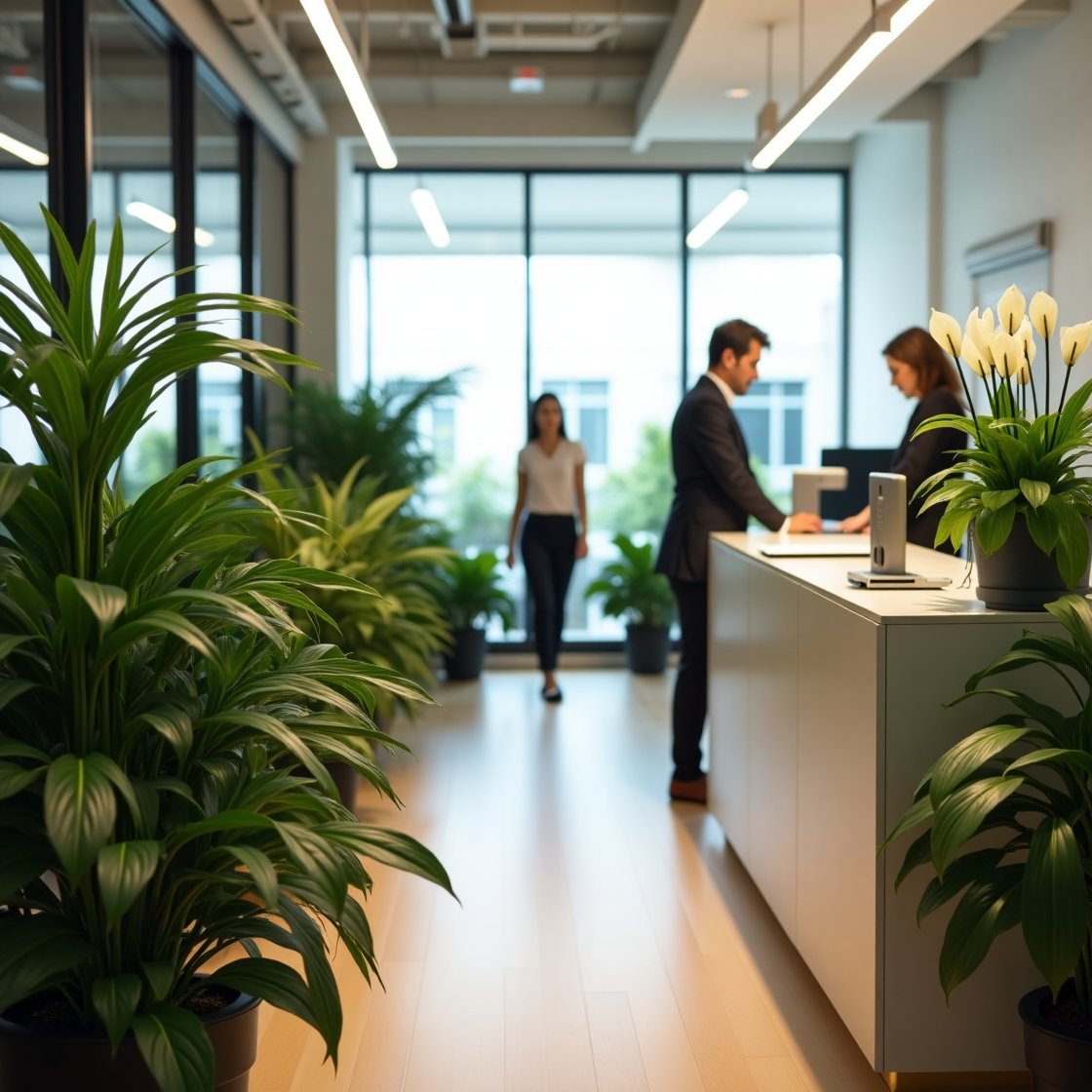In recent years, the corporate world has embraced a new design philosophy — one that values well-being, sustainability, and biophilic design. At the heart of this shift is a simple yet powerful element: plants.
Whether you’re furnishing a home office, coworking space, or full-scale corporate environment, plants offer more than aesthetic value. They can improve air quality, reduce stress, and enhance productivity. In this article, you’ll learn how to strategically incorporate greenery into different types of workspaces to make them more efficient, appealing, and inspiring.
Why Use Plants in Corporate Environments?
Before diving into how to use plants, it’s essential to understand why they matter in the modern workplace. According to several studies:
- Plants improve cognitive performance by up to 15%
- Employees feel more satisfied and focused in green environments
- Plants reduce stress and anxiety, especially in high-pressure workspaces
- Air-purifying plants can remove toxins like formaldehyde, often found in office materials
Plants provide a subtle but powerful message: this is a place where people matter.
Best Plants for Office and Corporate Spaces
Corporate settings require plants that are low-maintenance, clean (no shedding leaves), and adaptable to artificial lighting. Here are the top performers:
🪴 1. ZZ Plant (Zamioculca zamiifolia)
- Excellent for low-light spaces
- Very tolerant of neglect
- Sleek, modern look with waxy leaves
🌿 2. Snake Plant (Sansevieria)
- Almost indestructible
- Upright, architectural form
- Improves indoor air quality
🌸 3. Anthurium
- Bold red flowers add a sophisticated touch
- Works great in lobbies or meeting rooms
- Symbolizes hospitality and elegance
🍃 4. Pothos
- Perfect for high shelves or office partitions
- Grows fast and trails beautifully
- Requires minimal care
🌼 5. Peace Lily
- Elegant with white blooms
- Reduces toxins like ammonia and benzene
- Ideal for reception desks or lounges
🌵 6. Succulents
- Great for individual desks
- Small, stylish, and easy to manage
- Comes in many shapes and colors
Where to Place Plants in Corporate Spaces
A strategic placement plan maximizes both visual impact and employee benefits. Here are key locations and the types of plants that work best in each:
🏢 1. Reception Area
- Use larger statement plants like fiddle leaf fig or Areca palm to make a bold first impression.
- Include colorful blooms like anthuriums for a polished look.
🧑💻 2. Workstations
- Small potted succulents or snake plants on desks bring greenery without clutter.
- Add shelf-friendly trailing plants like pothos in open-plan setups.
💼 3. Meeting Rooms
- Peace lilies or orchids provide elegance and serenity.
- Choose non-fragrant plants to avoid distractions or allergies.
🪑 4. Break Rooms
- Use cheerful plants like spider plants or bromeliads to create a more relaxed vibe.
- Hanging plants in corners save space and add volume.
🪟 5. Window Sills
- For sunny windows, try aloe vera or jade plants.
- Use uniform planters to maintain a tidy and professional look.
🖼️ 6. Blank Walls or Dividers
- Vertical plant walls or mounted planters add depth and soften acoustics.
- Great for coworking environments or collaborative spaces.
Design Principles for Office Plant Styling
When choosing plants and pots, it’s important to match the brand identity and decor style of the business. Consider:
1. Color Palette
- Neutral offices: add contrast with deep green or burgundy foliage
- Creative spaces: mix textures and colors for inspiration
- Modern settings: stick to black, white, or metallic planters for a minimalist aesthetic
2. Balance and Symmetry
- Keep large plants evenly spaced across the office
- Use clusters of small plants for communal tables or shared desks
3. Consistency
- Use matching pots or coordinated planters to maintain a clean visual identity
- Stick with similar plant types per zone to avoid visual chaos
Biophilic Design and Productivity
Biophilic design — the concept of connecting humans with nature in built environments — has become a cornerstone of modern office decor. Plants play a vital role in this by:
- Reducing cognitive fatigue
- Enhancing mental restoration
- Promoting calm, focus, and alertness
Simple additions like a vertical moss wall or a green corner lounge with plants can completely transform the office energy.
Maintenance Tips for Corporate Plants
Offices are not homes — plant care must be easy, reliable, and scalable.
- Hire a plant service for watering and trimming if your office has many plants
- Choose self-watering pots for desks and windowsills
- Avoid plants with dropping leaves or sticky sap
- Label plant needs and assign team “plant stewards” if done internally
Eco-Friendly and Sustainable Plant Decor
Show commitment to the planet while making the office beautiful:
- Use recycled pots or planters
- Install hydroponic systems for cleaner maintenance
- Create green corners with reclaimed wood, stone, and LED lighting
- Choose plants that reduce carbon and VOCs
This not only benefits employees, but also reinforces brand values to clients and visitors.
Remote and Hybrid Work Considerations
Even remote workers can benefit from greenery:
- Send small desktop succulents as welcome gifts to remote employees
- Offer home plant care guides in company newsletters
- Encourage employees to decorate their home workstations with green life
In hybrid setups, ensure shared desks are minimally but thoughtfully decorated with low-maintenance plants.
Final Thoughts: Greener Offices, Happier Teams
Plants have evolved from mere decorative accessories to essential components of healthy, productive workplaces. From solo desk succulents to sprawling living walls, green design improves focus, mood, and even company culture.
Whether you’re designing a modern tech space, a boutique firm, or a creative studio, there’s a plant — or several — that can make it better. With minimal investment and thoughtful placement, your corporate space can blossom into a thriving, people-centered environment.
